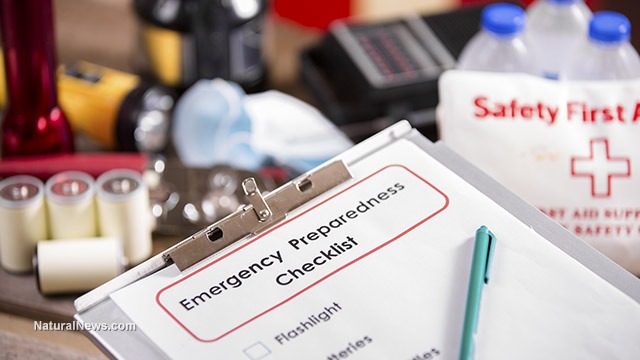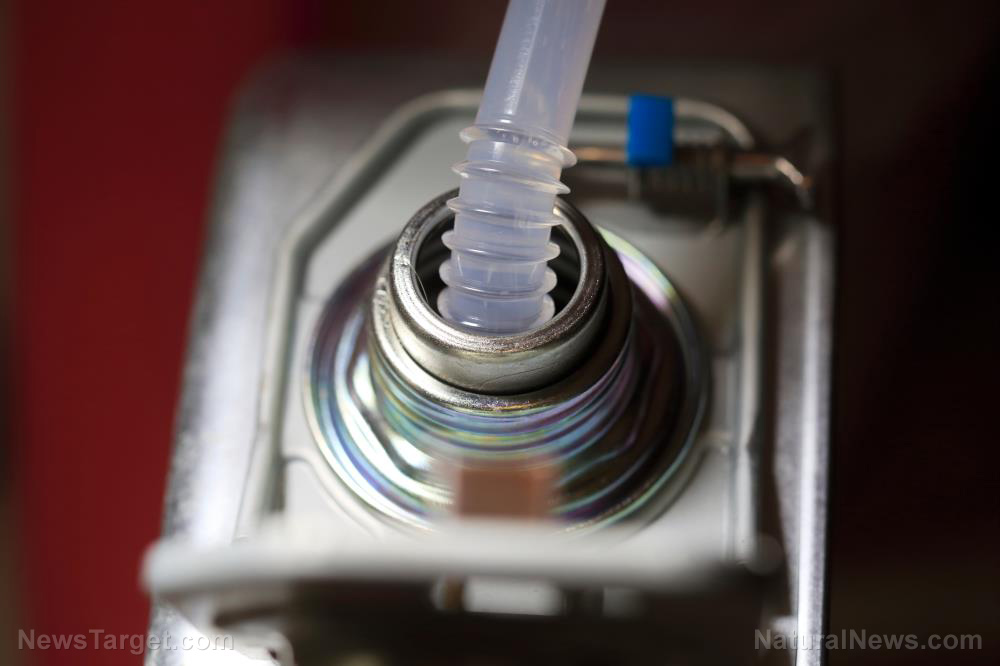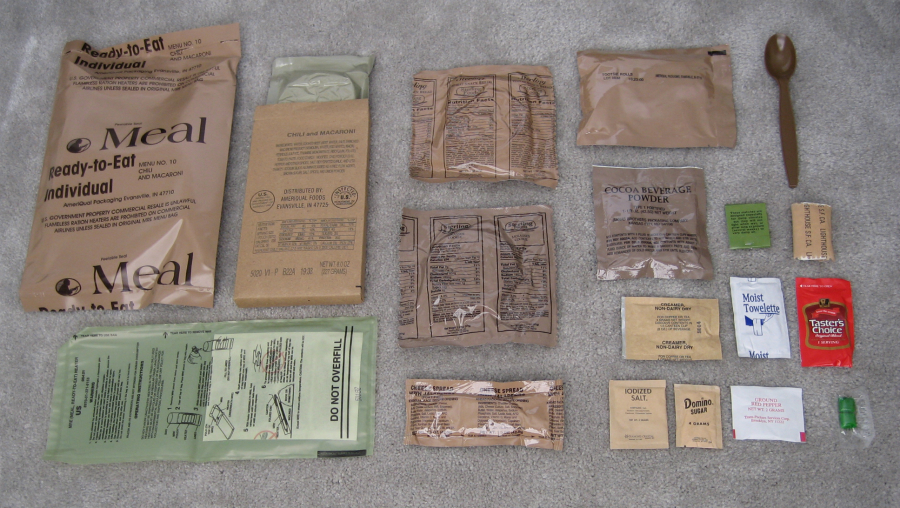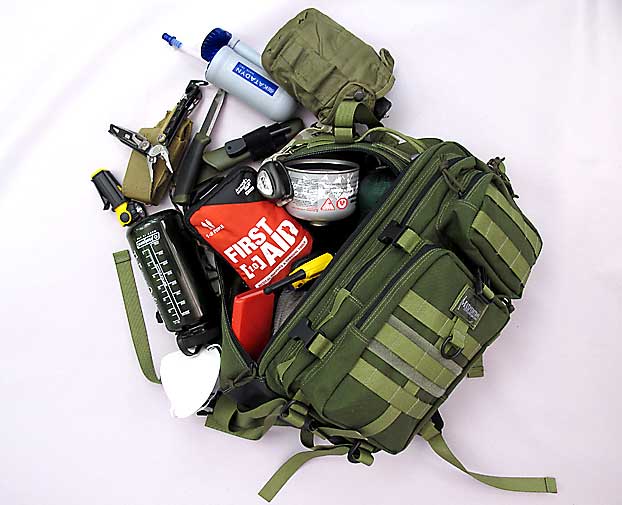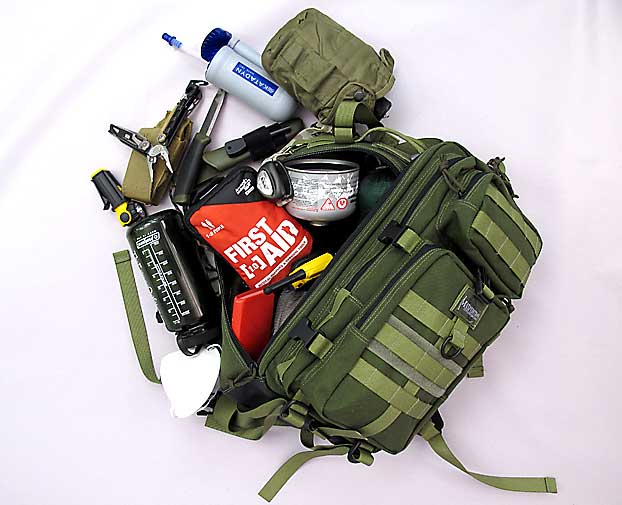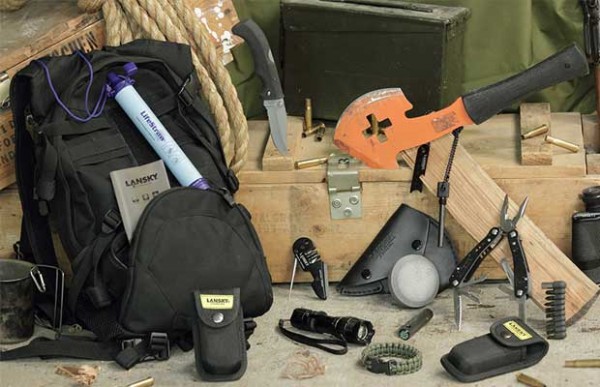Prepping before SHTF: How to store fuel properly
07/13/2021 / By Zoey Sky

Before SHTF, you need to stock up on survival essentials like food and water. You also need to make sure that you store fuel properly to make your supplies last longer after disaster strikes. (h/t to LivingLifeInRuralIowa.com)
Storing fuel, particularly gas, may seem hard if you don’t know how to do it properly. Before you stock up on various fuels, plan ahead and do your research.
Here are some things to keep in mind if you want to stock up on fuel before SHTF:
Gas is not the same as diesel
Diesel has a lower octane rating than gas, and this means you can’t run diesel in a gas-powered vehicle or motor. Gas-powered cars can’t easily combust diesel because the latter has low octane.
If you ever get stranded and have trouble finding fuel, putting diesel in a gas-powered engine can make the situation worse. You’ll also have to pay for costly repairs since the fuel system will have to be drained and fuel filters need to be replaced.
Using the wrong kind of fuel on your car can make the engine start running rough and start knocking until it stops running.
Have a good rotation plan for your fuel stockpile
Before you buy different kinds of fuel, set a rotation plan so you don’t waste your time, money and effort.
Gas contains ethanol and this means you can’t stockpile gas for longer than two to three months. Any longer and the gas will go bad unless you mix an additive into the container to preserve the gas longer.
Even with an additive, the gas should be used up within six months.
If you’re going to use gas in your vehicles, decide on a good rotation plan. You can prevent gas from going bad by emptying the containers into your vehicles and having them refilled. Do this every other month or half one month and half the next month.
There are different octane ratings in gas that should also be considered for your rotation plan:
- The higher the number (and price) on the gas, the higher the octane the gas has in it. This also means it has less ethanol in it when it is higher octane. Gas with a higher octane like 91 is often used in mowers and other small engines.
- Higher octane gas stores better, but it still needs to be rotated regularly.
- You can get non-oxygenated gasoline at some pumps which have no additives like ethanol. This is best for long-term storage but this kind of fuel still required regular rotation and treatment with fuel stabilizers. (Related: Prepping for a power outage: What to stock up on and when to bug out.)
Read up on different kinds of diesel
Diesel lasts longer than gas in storage, but there is a difference in diesel fuels.
During the spring, summer and fall, diesel is usually available as a biodiesel blend. Many states have mandated this to comply with environmental regulations.
This shouldn’t be a problem until winter. When temperatures drop to 10 F or colder, biodiesel will start to “gel” in containers, barrels and tanks, which can cause problems when SHTF.
Prevent this by adding an anti-gelling additive before the weather starts to turn cold. But if you use an additive, you have to warm up the tank, add warm fuel and change plugged fuel filters.
If you want to stockpile diesel, get unblended diesel (#1 diesel). The rest of the year, you can only get #2 diesel. Unblended diesel costs more but it doesn’t gel in cold temperatures unless it drops down to 30-40 F below zero.
Note that in frigid temperatures, semi-trucks are either stored inside heated buildings or not shut off at all to prevent diesel from gelling. Plan ahead since unblended diesel is usually only available in winter.
Additionally, diesel is different depending on the application.
Diesel sold for agriculture use is dyed red. This type is supposed to only be used in machines that do not see road use, like tractors or certain construction equipment. Red diesel fuel can’t be used in vehicles or semi-trucks.
You’ll be fined if you get caught using red diesel fuel in your vehicles. Red diesel fuel doesn’t have road taxes levied on it and it can only be delivered by a local fuel delivery company or a cooperative.
Use an antibacterial for long-term diesel storage
Condensation or a faulty gasket means you will sometimes have water in your fuel. With diesel, this means the water will have a higher density and sink to the bottom of the fuel tank.
This can be a problem because, under the right conditions, bacteria and fungi can grow right where the water line meets the diesel line. These bacteria and fungi can give off acidic byproducts which can result in sediment or “diesel sludge” that gets deposited at the bottom of the tank.
Diesel sludge will plug fuel filters, corrode tanks and make fuel unusable. Use a biocide if you’re planning on stocking up on diesel for long-term storage.
Use the right containers
When stocking up on gas or diesel, you need to use the correct containers. Get containers that are rated for gas and diesel storage.
Don’t wait until SHTF to stock up on gas or diesel for your car or generator.
Go to Preparedness.news for more tips on how to store fuel for your stockpile properly.
Sources include:
Tagged Under: bug in, Collapse, emergencies, fuel, fuels storage, homesteading, how-to, off grid, preparedness, prepper, prepping, self sufficiency, self-reliance, SHTF, survival, survivalist
RECENT NEWS & ARTICLES
COPYRIGHT © 2017 GEAR.NEWS
All content posted on this site is protected under Free Speech. Gear.news is not responsible for content written by contributing authors. The information on this site is provided for educational and entertainment purposes only. It is not intended as a substitute for professional advice of any kind. Gear.news assumes no responsibility for the use or misuse of this material. All trademarks, registered trademarks and service marks mentioned on this site are the property of their respective owners.


